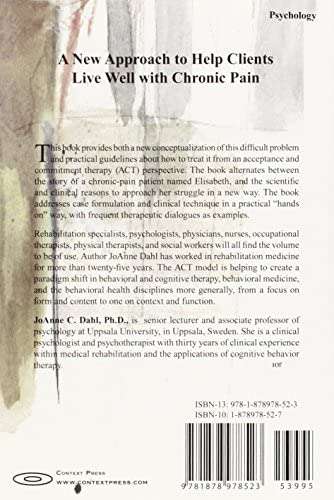Virtually all cells in the human body contain genes, making them potential targets for gene therapy. However, these cells can be divided into two major categories: somatic cells (most cells of the body) or cells of the germline (eggs or sperm). In theory it is possible to transform either somatic cells or germ cells.
Gene therapy using germ line cells results in permanent changes that are passed down to subsequent generations. If done early in embryologic development, such as during preimplantation diagnosis and in vitro fertilization, the gene transfer could also occur in all cells of the developing embryo. The appeal of germ line gene therapy is its potential for offering a permanent therapeutic effect for all who inherit the target gene. Successful germ line therapies introduce the possibility of eliminating some diseases from a particular family, and ultimately from the population, forever. However, this also raises controversy. Some people view this type of therapy as unnatural, and liken it to “playing God.” Others have concerns about the technical aspects. They worry that the genetic change propagated by germ line gene therapy may actually be deleterious and harmful, with the potential for unforeseen negative effects on future generations.
Somatic cells are nonreproductive. Somatic cell therapy is viewed as a more conservative, safer approach because it affects only the targeted cells in the patient, and is not passed on to future generations. In other words, the therapeutic effect ends with the individual who receives the therapy. However, this type of therapy presents unique problems of its own. Often the effects of somatic cell therapy are short-lived. Because the cells of most tissues ultimately die and are replaced by new cells, repeated treatments over the course of the individual’s life span are required to maintain the therapeutic effect. Transporting the gene to the target cells or tissue is also problematic. Regardless of these difficulties, however, somatic cell gene therapy is appropriate and acceptable for many disorders, including cystic fibrosis, muscular dystrophy, cancer, and certain infectious diseases. Clinicians can even perform this therapy in utero, potentially correcting or treating a life-threatening disorder that may significantly impair a baby’s health or development if not treated before birth.
In summary, the distinction is that the results of any somatic gene therapy are restricted to the actual patient and are not passed on to his or her children. All gene therapy to date on humans has been directed at somatic cells, whereas germline engineering in humans remains controversial and prohibited in for instance the European Union.
Somatic gene therapy can be broadly split into two categories:
ex vivo, which means exterior (where cells are modified outside the body and then transplanted back in again). In some gene therapy clinical trials, cells from the patient’s blood or bone marrow are removed and grown in the laboratory. The cells are exposed to the virus that is carrying the desired gene. The virus enters the cells and inserts the desired gene into the cells’ DNA. The cells grow in the laboratory and are then returned to the patient by injection into a vein. This type of gene therapy is called ex vivo because the cells are treated outside the body. in vivo, which means interior (where genes are changed in cells still in the body). This form of gene therapy is called in vivo, because the gene is transferred to cells inside the patient’s body.
Cancer occurs from pathogenic genetic variants (formerly referred to as mutations) that involve changes in the order of the base pairs, including substitutions, deletions, additions, or shifts. Pathogenic variants can be divided into two broad categories based on the tissue from which they originate.
Somatic
Variants
Somatic or acquired genomic variants are the most common cause of cancer, occurring from damage to genes in an individual cell during a person’s life. They are classified in terms of the actionability of an available effective therapy. Cancers that occur because of somatic variants are referred to as sporadic cancers. Somatic variants are not found in every cell in the body, and they are not passed from parent to child. Some common carcinogens that cause pathogenic variants include tobacco use, ultraviolet light or radiation, viruses, chemical exposures, and aging.
Germline
Variants
Germline variants are far less common, accounting for only about 5%–10% of all cancers. A germline variant occurs in a sperm cell or an egg cell and is passed directly from a parent to a child at the time of conception. As the embryo grows into a baby, the pathogenic variant from the initial sperm or egg cell is copied into every cell in the body. Because the pathogenic variant affects reproductive cells, it can pass from generation to generation.
Cancers caused by germline pathogenic variants are called inherited or hereditary. More than 50 different hereditary cancer syndromes have been identified that can be passed from one generation to the next. Family and personal histories suggestive of germline pathogenic variants include:
-
Early-onset cancer (breast, colon, or endometrial cancer in people younger than 50)
-
Rare cancers (breast cancer in those assigned male at birth, pancreatic cancer, pheochromocytoma, paraganglioma, medullary thyroid cancer, ovarian cancer, retinoblastoma, or metastatic or Gleason 7 or higher prostate cancer)
-
Certain pathologies (triple-negative breast cancer or microsatellite unstable cancer)
-
More cancers in a family than expected by chance
-
More than one primary cancer in one person or bilateral cancer in a paired organ (e.g., breast cancer in both breasts)
-
Evidence of autosomal-dominant inheritance (e.g., two or more generations affected, with both sexes affected)
-
Any pattern of cancer associated with a known cancer syndrome (e.g., breast, ovarian, pancreatic and prostate cancer; colon, endometrial, and ovarian cancer)
-
Presence of premalignant conditions (e.g., 20 colorectal adenomatous polyps over a lifetime)
-
Individuals from families with a known germline pathogenic or likely pathogenic variant associated with increased cancer risk
See the sidebar for more red flags that might indicate germline risk.
Key Indicators of Hereditary Risk
-
Cancer occurring at a younger age than expected in the general population (e.g., breast, endometrial, or colon cancer at age 50 or younger)
-
More than one primary cancer in one person or bilateral cancer in a paired organ (e.g., breast cancer in both breasts)
-
Evidence of autosomal-dominant inheritance (e.g., two or more generations affected, with both men and women affected)
-
Any pattern of cancer associated with a known cancer syndrome (e.g., breast, ovarian, and pancreatic cancer; colon, endometrial, and ovarian cancer)
-
Presence of premalignant conditions (e.g., 20 colorectal adenomatous polyps)
-
A cancer diagnosis associated with hereditary risk (e.g., male breast cancer, ovarian cancer, retinoblastoma, pancreatic, paraganglioma, pheochromocytoma)
-
Specific clinical characteristics of a tumor associated with hereditary cancer syndromes (e.g., microsatellite instability in colon cancer or triple-negative breast cancer)
-
Individuals from families with a known mutation associated with increased cancer risk
Identifying the Difference
In general, cancer cells have more genetic changes than normal cells, but each person’s cancer has a unique combination of genetic alterations. Some changes may be the result of cancer cells dividing, rather than the initiating event that led to the cancer’s development. As the cancer continues to grow, additional changes will occur, even within the same tumor.
A form of biomarker testing, DNA sequencing may identify both germline and somatic pathogenic variants by comparing the DNA sequence of cancer cells to healthy cells. Germline pathogenic variants are identified through a blood sample or with buccal cells from a saliva sample. Somatic variants are detected by either testing the tumor directly or liquid biopsy of a blood sample with circulating tumor cells to identify the DNA sequencing changes driving tumor growth. Understand the variants for a particular malignancy may help providers determine which therapies might be most effective.
Information provided by germline and somatic biomarker testing may overlap. For example, a person with a malignancy harboring a BRCA pathogenic variant may or may not have an inherited BRCA germline variant. Depending on the cancer type, both tumor and germline testing may be used to help select treatment options. Patients should be referred for germline testing if they have a personal or family history suggestive of hereditary risk, the tumor has microsatellite instability, the variant is a cancer susceptibility gene, the gene is considered pathogenic or likely pathogenic, or the allele frequency approaches 50%.
What Oncology Nurses Need to Know
Oncology nurses should understand when to refer patients for germline testing and how to provide patient education about the difference between germline and somatic variants. Educating patients and families about the different types of variants enables patients to have insight into the development of cancer and what it means for their treatment and recommendations for prevention and early detection of other cancers.
During an already confusing and stressful time, patients and families may have trouble coping with both a cancer diagnosis and learning about germline risk because of the possibility that other family members may also have a hereditary susceptibility to develop malignancy. Knowledge of germline pathogenic variants allows nurses to guide the entire family on appropriate cancer prevention and early detection strategies.
To discuss the information in this article with other oncology nurses, visit the ONS Communities.
To report a content error, inaccuracy, or typo, email [email protected].
The Cancer Gene Census (CGC) is an ongoing effort to catalogue those genes which contain mutations that have been causally implicated in cancer and explain how dysfunction of these genes drives cancer. The content, the structure, and the curation process of the Cancer Gene Census was described and published in Nature Reviews Cancer.
The census is not static, instead it is updated when new evidence comes to light. In particular we are grateful to Felix Mitelman and his colleagues in providing information on more genes involved in uncommon translocations in leukaemias and lymphomas. Currently, more than 1% of all human genes are implicated via mutation in cancer. Of these, approximately 90% contain somatic mutations in cancer, 20% bear germline mutations that predispose an individual to cancer and 10% show both somatic and germline mutations.
Census tiers
Genes in the Cancer Gene Census are divided into two groups, or tiers.
Tier 1
To be classified into Tier 1, a gene must possess a documented activity relevant to cancer, along with evidence of mutations in cancer which change the activity of the gene product in a way that promotes oncogenic transformation. We also consider the existence of somatic mutation patterns across cancer samples gathered in COSMIC. For instance, tumour suppressor genes often show a broad range of inactivating mutations and dominant oncogenes usually demonstrate well defined hotspots of missense mutations. Genes involved in oncogenic fusions are included in Tier 1 when changes to their function caused by the fusion drives oncogenic transformation, or in cases when they provide regulatory elements to their partners (e.g. active promoter or dimerisation domain).
Tier 2
A new section of the Census, which consists of genes with strong indications of a role in cancer but with less extensive available evidence. These are generally more recent targets, where the body of evidence supporting their role is still emerging.
Hallmarks
New overviews of cancer gene function focused on hallmarks of cancer pull together manually curated information on the function of proteins coded by cancer genes and summarise the data in simple graphical form. They present a condensed overview of most relevant facts with quick access to the literature source, and define whether a gene has a stimulating or suppressive effect via individual cancer hallmarks. Genes with the hallmark descriptions available are marked with the hallmark icon, that when clicked, opens the hallmark page. Hallmark descriptions will be expanded to encompass more genes and updated on regular basis.




